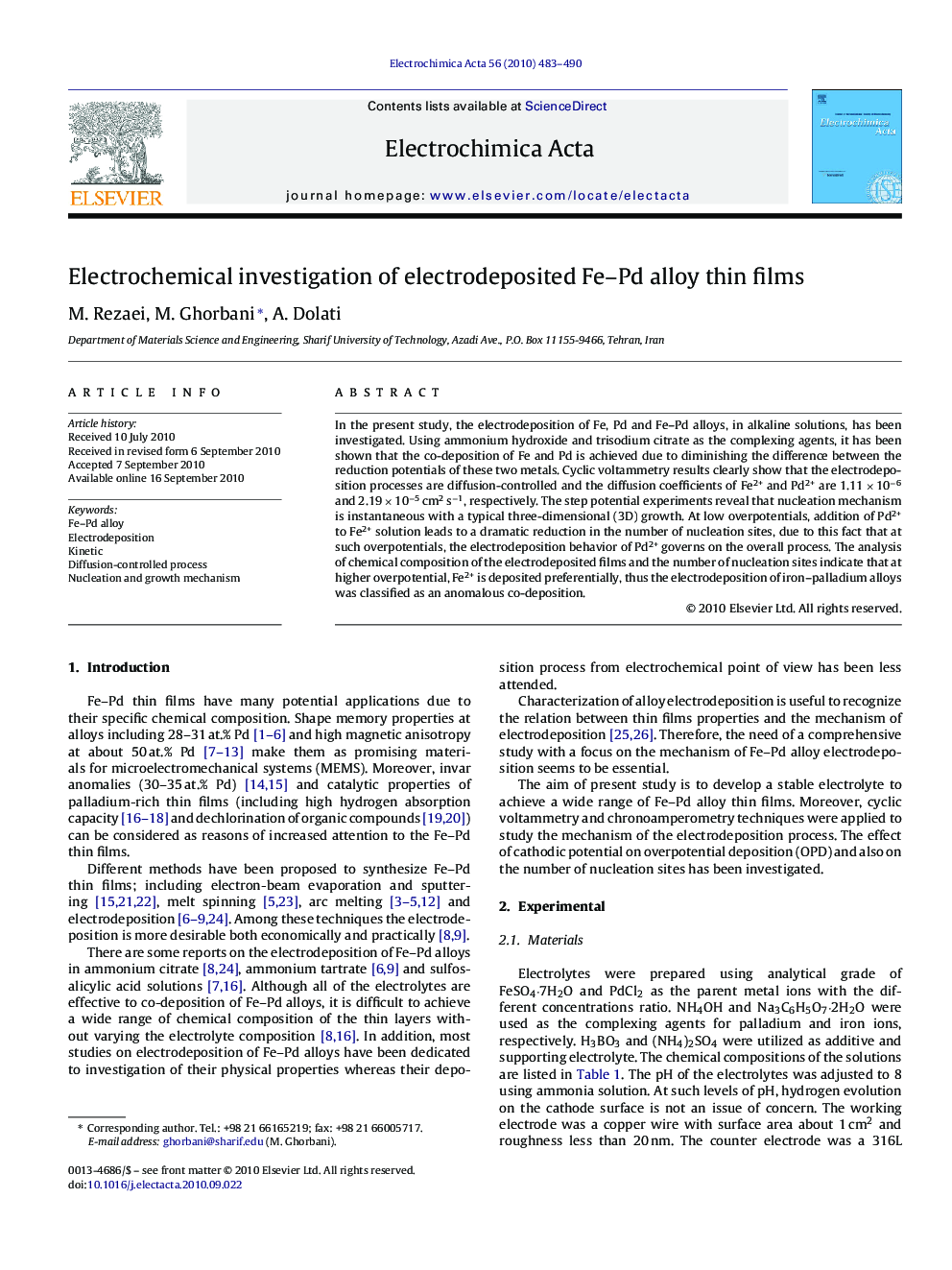| Article ID | Journal | Published Year | Pages | File Type |
|---|---|---|---|---|
| 190531 | Electrochimica Acta | 2010 | 8 Pages |
In the present study, the electrodeposition of Fe, Pd and Fe–Pd alloys, in alkaline solutions, has been investigated. Using ammonium hydroxide and trisodium citrate as the complexing agents, it has been shown that the co-deposition of Fe and Pd is achieved due to diminishing the difference between the reduction potentials of these two metals. Cyclic voltammetry results clearly show that the electrodeposition processes are diffusion-controlled and the diffusion coefficients of Fe2+ and Pd2+ are 1.11 × 10−6 and 2.19 × 10−5 cm2 s−1, respectively. The step potential experiments reveal that nucleation mechanism is instantaneous with a typical three-dimensional (3D) growth. At low overpotentials, addition of Pd2+ to Fe2+ solution leads to a dramatic reduction in the number of nucleation sites, due to this fact that at such overpotentials, the electrodeposition behavior of Pd2+ governs on the overall process. The analysis of chemical composition of the electrodeposited films and the number of nucleation sites indicate that at higher overpotential, Fe2+ is deposited preferentially, thus the electrodeposition of iron–palladium alloys was classified as an anomalous co-deposition.
